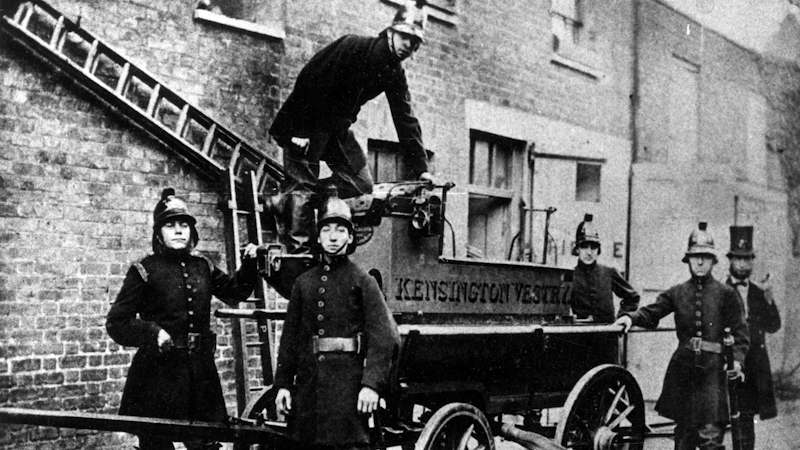
Kensington Vestry Firefighters with their manual fire pump in around the mid-1800s
Before the first fire station was built in the Kensington area, the volunteer firefighters would have collected their firefighting equipment from a store in the vestry of St Mary Abbots Church, on Kensington High Street.
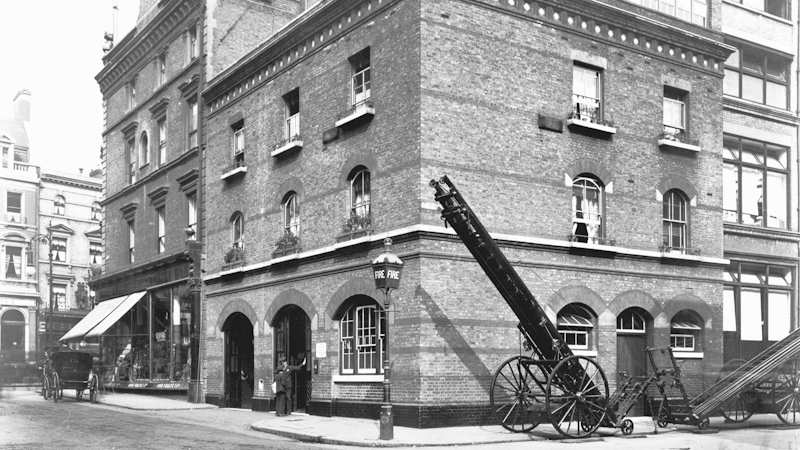
The first fire station to serve the Kensington area
The first purpose built fire station was located on the corner of King Street and Ball Street, and opened in 1871. It was operational until the current Kensington Fire Station opened in 1905. The earlier building, and Ball Street, were removed to make way for the construction of Barkers Department Store.
A new fire station
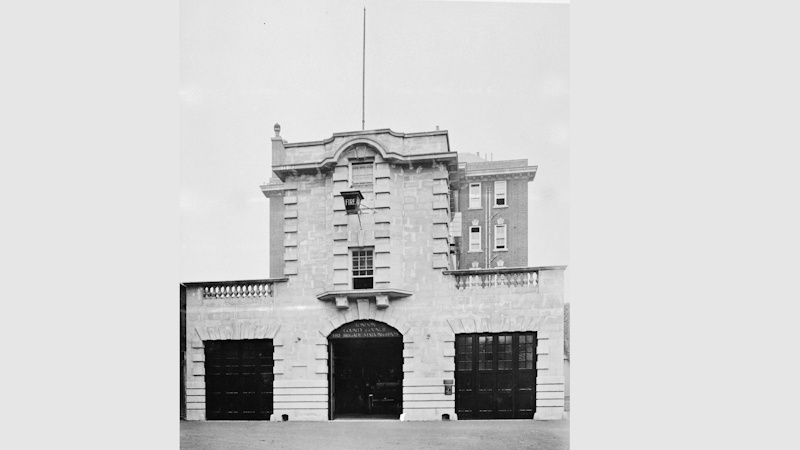
Kensington Fire Station, after it opened in 1905
The current Kensington Fire Station officially opened on 1 June 1905. The building was designed by Herbert F T Cooper, an architect from the London County Council Architects Department, with the aim to increase the efficiency of firefighters being ready to head out to fight fires. To achieve this some of the first sliding poles were installed to make the journey from the upper floors to the fire engines much quicker. The plans also included state of the art technology for the time, including electric lighting throughout the building.
The grand frontage was built of Portland Stone and the five-storey red-brick built block behind this features Queen Anne style windows. Today, it is Grade II listed building due to its architectural heritage and importance.
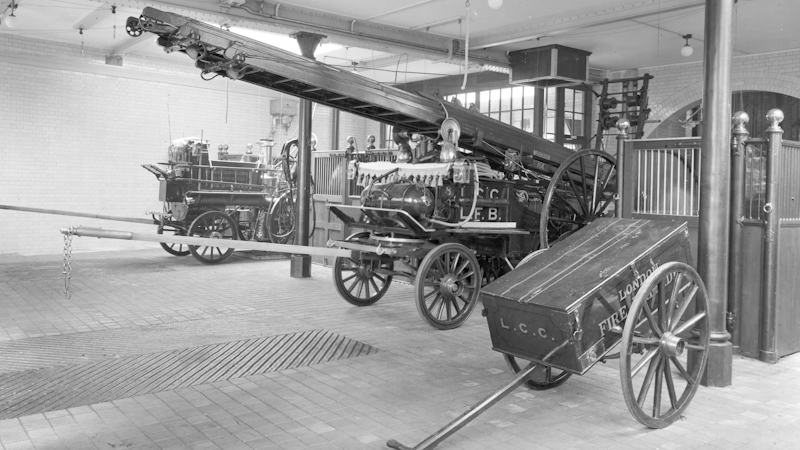
Inside the fire station's appliance bay in around 1907. Showing (from the left) a horse-drawn steam fire engine, fire escape ladder and manually operated hose cart
When the building was officially opened by Lewin Sharp, Chairman of the London County Council it was crewed by a station officer, thirteen firefighters and three coachmen who cared for six horses. A fire escape ladder, a steam fire engine, a turntable ladder all horse-drawn, were ready for use onsite alongside a manually operated fire escape ladder.
At the time, firefighters would work for long periods on duty and lived at the fire station. The design of the fire station provided rooms for single firefighters to live on the first and second floors at the front of the building, above the fire engine bays. Married firefighters and their families lived in the brick building towards the back of the site.
The decline of horsepower
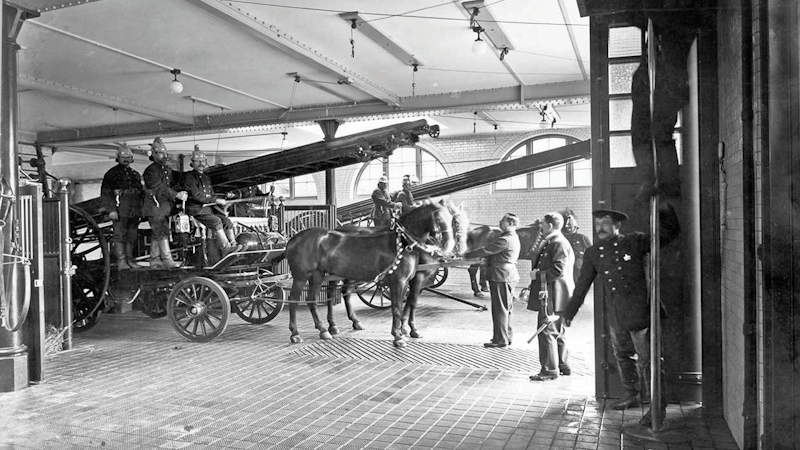
Inside the busy appliance bay in around 1905, possibly a drill practise as the firefighters are using the sliding pole and the horses are ready to move the vehicles
In 1905, when Kensington Fire Station opened, the best and most reliable way to get a fire engine and firefighters to a fire was using a pair of horses. At this point the brigade used around 300 horses, across London, which were hired from Thomas Tilling Ltd. Tilling also provided horses for London buses. Horses were usually 5 years old when they started and served until they were 12.
The horses, also known as ‘brigade greys’ (although they were not always a grey colour) were usually stabled at the fire stations and cared for by coachmen. Special features were included in the designs for the fire stations including sloped exits to help the horses get the speed required to move the heavy steam-powered fire engines out of the building.
By 1913 the station housed four horses, instead of six, and two motorised fire engines had been introduced. Then the conscription of horses to support the effort during the First World War resulted in a rapid move to completely change over to motorised vehicles. By 1921 London Fire Brigade had replaced all their horse-drawn fire engines. The final pair in London were stationed at Kensington Fire Station.
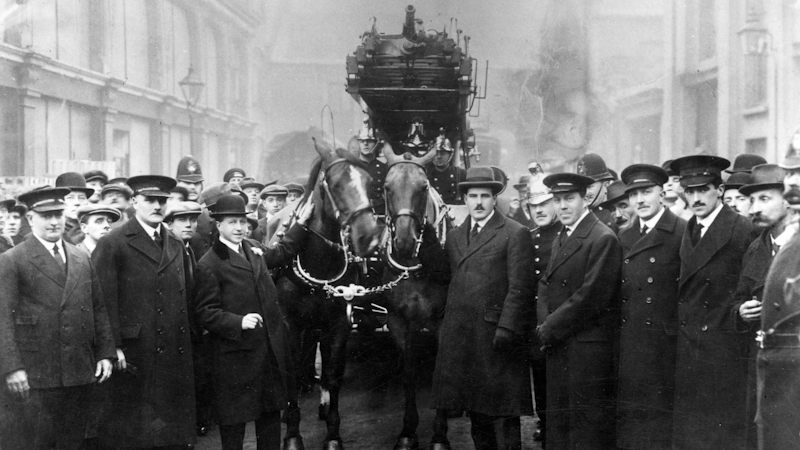
In 1921 Lucy and Norah retired. They were final pair of horses who worked for the Brigade.
On 24 November 1921, the pair called Lucy and Norah, who had pulled the turntable ladder, were retired from their duties in a special farewell ceremony. Many turned out to mark the importance of the horses and their part in keeping London and Londoners safe.
Second World War
The Auxiliary Fire Service (AFS) had been formed nationally in 1938, as part of the Civil Defence Service, to strengthen the resources of the regular fire services in wartime. Kensington Fire Station was supported by five substations.
Due to its central location, the Kensington area suffered from regular bombing during enemy attacks, including V1 flying bombs and V2 rockets. A number of the substations supporting the fire station had to move locations due to damage from these attacks.
In 1941, all fire brigades, including LFB, became part of the National Fire Service (NFS).
After the war
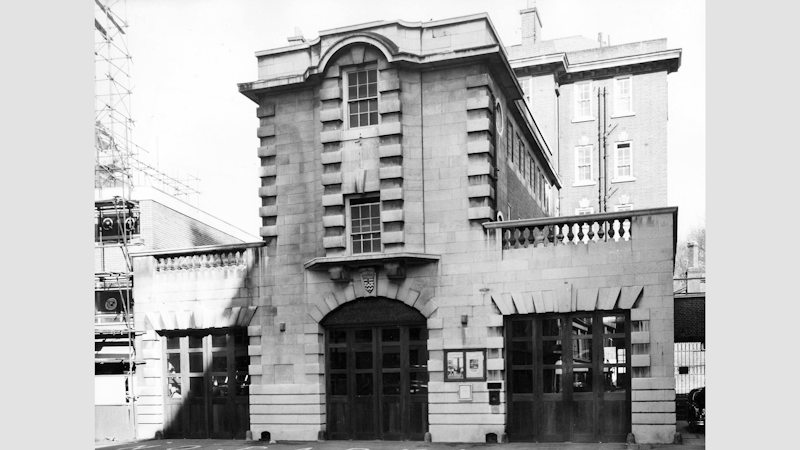
Kensington Fire Station in around 1948. The London County Council coat of arms are displayed above the central door
In 1948, the NFS was disbanded, and LFB was re-established. The station was then known as A10. When Greater London Council (GLC) was formed in 1965, the borders of London were expanded, and Kensington became fire station A28.
It was Grade II listed in 1991, due to its architectural heritage and importance. The Grade Listing entry from Historic England notes the architectural design as “Edwardian Baroque style with Arts and Crafts mannerisms” and goes onto say that;
“It is one of the most distinctive, and architecturally ambitious, of a remarkable series of fire stations built by the LCC (London County Council) between 1900-1914, with added interest for its spatial planning; The composition, with the projecting stone fire station and flats rising behind, is unusual, disciplined and bold, with good materials and crisp detailing”
Modernisation works were carried out on the building in the 2000s, and one of the appliance bay sections was subdivided by full-height glazed wall for office use.
Today
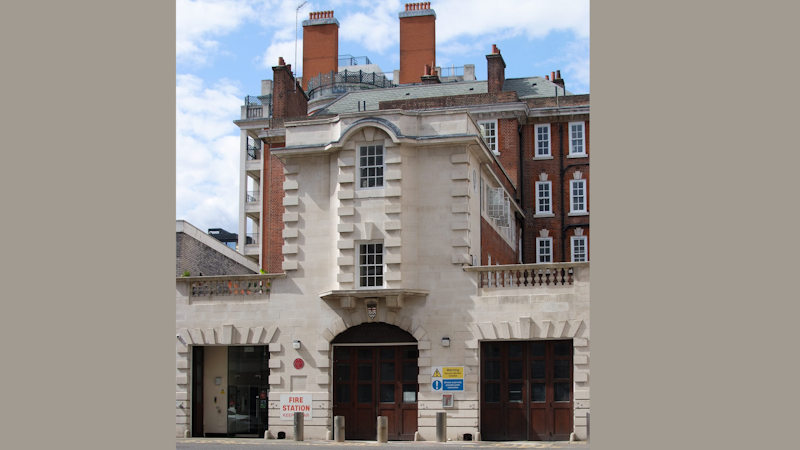
View of the fire station taken in 2023
Kensington Fire Station (G33) is one of the brigades oldest operating fire stations and responds to a variety of incidents including fires, road traffic collisions and flooding as well as extensive community-based fire safety work.
The fire station serves one of London's most diverse and historically significant areas. This includes iconic landmarks like Kensington Palace, the Royal Albert Hall and numerous heritage buildings.
Researched and put together by LFB Museum Volunteer Alan F.